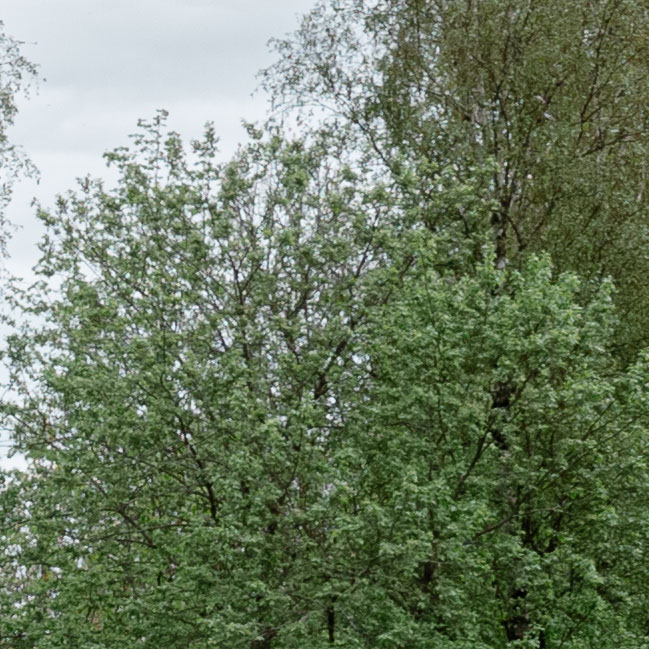GEAR
ReviewPosted January 2025
Voigtländer Nokton 50/1.5 II
↓
←
GEAR
The Nokton 50/1.5 II is a fast normal lens, released in 2020 by Voigtländer.
Personally I find the easiest springboard for diving in to a dissection of it, is to start from its faster sibling.
The Voigtländer 50/1.2 has become one of my all time favorite lenses. Its extreme speed, beautiful rendering and flexible signature – all in a surprisingly compact package – results in an incredibly compelling piece of kit. I actually ended up shooting nothing but that lens for over a year after picking it up, stating in my review that I could stick with it for years without issue.
When the 50/1.5 II came to market though (which was during this initial time with the 50/1.2) I must say I was intrigued. Especially as early usage reports started to pop up. From these accounts it seemed like this newer lens offered almost everything there was to like about its faster sibling, only in a much smaller, more practical package.
Now that I’ve had the 50/1.5 II at hand for quite a while I wouldn’t necessarily say that this is a fully accurate characterization – despite a number of similarities the two lenses actually end up feeling quite different. What they both have in common though, is that they’re both very successful in achieving their respective design goals. We’ll circle back to these goals & differences in a bit.
For now though, it’s easy to gather that the 50/1.5 II is heavily focused on practicality – it’s the smallest and lightest 50 faster than f/2 that has been in serial production for the M-mount (at least from my research). It also offers consistently high performance and solid handling. Overall it’s certainly an impressive achievement on Voigtländer’s part.
Now, of course there are bound to be some compromises with such a focus on compactness, but what are they and how do they affect how the lens stacks up? That’s what we’re here to find out.
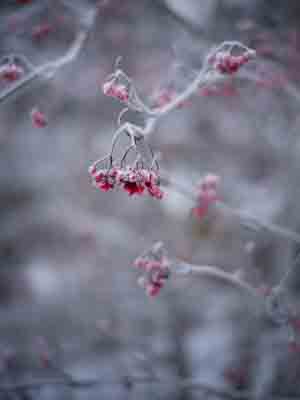
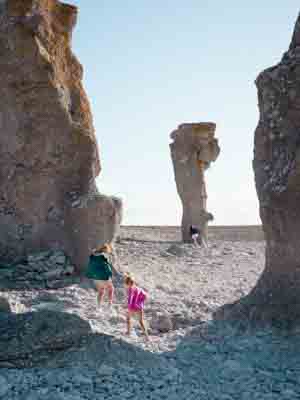
I’ve had the little Nokton for three years at this point – one of the longest stints of owning a lens ahead of publishing a review since starting this site. This hasn’t been entirely planned – other priorites in life have simply taken precedence. Still, I’ve also had my opinion of the lens shift a bit over time – resulting in me adjusting parts of this review more than I usually do.
Before heading into the full breakdown, here’s a brief summary:
- The Nokton 50/1.5 II is a very fast normal lens. Considering its specifications it’s incredibly compact. There are a number of versions and also prior iterations to choose from. → Specifications.
- It’s an exceptionally well made lens with solid industrial design. → Appearance & construction.
- Ergonomics are very good with well considered control points, though not completely without caveats. → Ergonomics.
- Image quality is very impressive overall. A few performance characteristics are slightly compromised due to the small size of the lens, though less so than you might expect. The rendering is also well balanced and can offer stunning output in many scenarios. → Image quality.
- In use the Nokton is unusually transparent. It simply gets out of your way. → In use.
- There are many fantastic 50mm lenses for M-mount, but few are as well rounded as the Nokton. → Alternatives.
- Whilst the Nokton 50/1.5 II might not quite reach the levels of being absolutely outstanding in any one specific area, it’s so well rounded and capable that it becomes perhaps the most compelling day to day 50 around. → Conclusion.
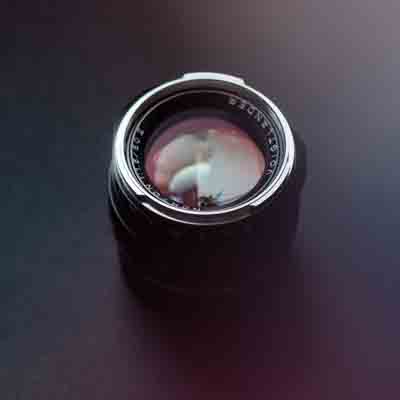
Specifications
Lens-mount M Mount
Length 36.9 mm
Weight 198 g*
Diaphragm 12 blades, f/1.5-f/16, half stops
Elements / Groups 8/7
MFD 0.7 m
Filter thread 43 mm
* For the black or silver aluminium versions. The black and nickel version is made from brass and weighs 255g as a result.
The Nokton 50/1.5 II is a very fast, very compact normal focal length lens for the Leica M-mount.
Versions
There’s an unusual amount to unpack in terms of versions of the 50/1.5. There are both different finishes and coating choices for this specific lens design, as well as two earlier, completely different iterations.
Let’s start with the choices for this lens specifically.
Version II choices
The 50/1.5 II is available in no less than six different versions. There are three finishes to choose from and two coating choices for each.
1Finishes & materials
The three finishes available are: black, silver and black/nickel.
The black and silver versions are both made out of aluminum and weigh in at 198 g.
The black/nickel version is made out of brass and is heavier as a result, weighing 255 g.
2Coating options
There are also two different coating processes to choose from: single coated or multi coated.
Single coated lenses have slightly lower contrast and are a touch more susceptible to flare.
Multi coated lenses then have slightly punchier output and handle flare better.
From side by side tests the differences seem to be very subtle most of the time, with moderate differences creeping in when the conditions are particularly challenging.
The subject of this review is a multi coated copy.
Earlier iterations
Despite being labeled as version two, the 50/1.5 II is confusingly the third iteration of 50/1.5 lenses from Voigtländer (though, to be fair, it’s the second for M-mount).
The first two versions use a very similar optical design, with the most recent iteration relying on a more complex formula.
There’s also a fairly recent 50/1.5 Heliar available from Voigtländer. That lens has very different design goals though. It’s using a completely different optical formula (one that’s traditionally better suited for slower lenses) and has a very particular character and rendering. It’s certainly an interesting lens, but not quite a clear alternative to the Nokton then.
Here’s an overview of the key specs for the different iterations:
| Version | Elements / Groups | MFD | Length | Weight | Filter thread |
| LTM (1999) | 6/5 | 0.9m | 58mm | 255g | 52mm |
| M-mount I (2013) | 6/5 | 0.7m | 47.7mm | 220/293g | 49mm |
| M-mount II (2020) | 8/7 | 0.7m | 36.9 mm | 198/255g | 43mm |
Personally I find the most recent iteration the most compelling. While the earlier lenses definitely look nice too, they both entail some compromises.
The first iteration only focuses down to 0.9m, which I find a bit limiting in use. The second iteration fixes that, but the ergonomics seem suboptimal – mainly due to the unconventional focus ring.
Optical design
Ok, with the different versions sorted, let’s take a look at the optical design.
It’s interesting to trace the lineage here. Voigtländer have been pursuing a similar design strategy for a good number of their lenses, starting with the original 1999 50/1.5 for LTM (the 75/2.5 launched the same year uses almost the same arrangement as well).
The overall design is clearly based on the symmetrical double gauss arrangement, but with a number of differences like a separated front group*.
* The overall design pattern seems to have been a reasonably common one throughout the years. The design shares similarities with for instance the earlier Leica Summicron and Noctilux 50’s, as well as the Olympus OM 50/1.8 and Topcor 50/1.5 (a lens we’ll return to for other reasons), just to mention a few examples. Those lenses all render in rather different ways from each other though, so it’s certainly clear that many different aspects contribute to how a lens renders, beyond the broad strokes design.
Leica Summicron 50/2 Collapsible
This design from the 1950's shows some similar modifications to the double gauss formula as the Nokton, e.g. the separated front group and less strict symmetry.

Voigtländer 50/1.5 II
Whilst the design is evolved and more ambitious here (considering e.g. the inclusion of aspherical surfaces), the Nokton's lineage is still clear.
I can’t speak with confidence about what more specifically the changes aim to achieve, but the overall design often seems to result in an interesting mix of typical double gauss imaging traits with a distinct flavor of its own in terms of rendering*.
* Similar (though not identical) rendering traits to the 50/1.5 II can be seen out of for instance the 75/2.5, 75/1.5, as well as the 50/1.2, all of which use variations of this take on the double gauss formula.
The 50/1.5 II then is a very clear descendant from the earlier iterations from Voigtländer. It’s leveraging many of the same techniques but with a slightly more ambitious version of the design, with two additional elements and added aspherical surfaces.
Voigtländer have also refined their coatings and manufacturing techniques over time, so there’s certainly potential here for solid output. But we’ll get to that soon enough. Let’s first spend some time on the exterior.
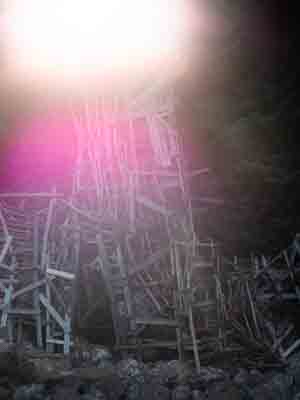

Finding our way to the place, using the markings secretly and discretely painted onto tree trunks, feels like a video game quest. It’s a steep climb down the hills of the nature reserve. Getting down to the cliffs by the sea, seeing the large piece in the warm summer afternoon is a striking experience.
Appearance & construction
The Nokton is a very small, very well made and nice looking lens.
The outward appearance of it is very closely modeled off of the old Topcor 50/1.5 lens mentioned earlier, or even more so the 50/2 from the same manufacturer. The black/nickel version of the Nokton is particularly reminiscent of the matching and apparently rare “panda” Topcor lens.
I do enjoy the classic look and it’s nice to see some variety in where Voigtländer is taking inspiration from (with many of their previous lenses mimicking early Leica lenses so closely). Still, as a fan of theirs I do sometimes feel it would be nice to see an industrial design from them that’s more identifiably their own.
Size
The 50/1.5 II is strikingly compact considering its specifications.
It’s smaller than most 50/2 lenses for M-mount. Compared to most comparable lenses for SLR or mirrorless cameras it’s absolutely tiny.
It doesn’t quite disappear on the camera the same way as the smallest M-mount lenses do*, but it’s a lot more performant than those options.
* Lenses such as the Leica 40/2 and Voigtländer 35/2.5 come to mind here.
Markings & scales
Markings are engraved and painted white on the black and black/nickel versions. The silver version has black lettering. This results in retained visibility even in low light.
The only exception is the single/multi coating label on the front of the lens (SC/MC) as it’s painted blue or green respectively (low light readability doesn’t really come in to play with these labels).
Typographic choices
Voigtländer have been using Helvetica Neue in the past, but here a different typeface, quite similar to DIN*, is used instead. I must say that I find it a more fitting choice than Helvetica Neue.
* There are many typefaces available in this vein, but I’ve not managed to figure out the specific one used here. It’s a bit more geometric than DIN and has a few unusual combinations of traits. The uppercase G doesn’t have a spur and the lowercase x-height is very tall, just to give two examples.
Another interesting typographic choice is that the decimal numerals are smaller than the integers, making for something akin to a camelcase look. A decimal comma is also used instead of a decimal point. These choices might aid readability a hair, but to my eye it all looks slightly messier.
The lettering is also on the small side. Everything is still very readable thanks to the clear letterforms, but compared to some other lenses markings aren’t quite as glanceable.
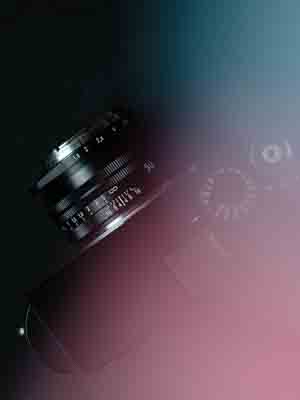
Note the double ribbing of the focus ring, as well as the typographic choices on the scales.
Scales
There’s a clear and easy to read metric distance scale as well as a well usable depth of field index.
Unlike most contemporary M-mount lenses there’s no corresponding imperial scale. The lens ends up looking unusually clean as a result of just having the single distance scale (almost to the point of coming across as ascetic in its appearance).
Aperture settings are marked in full stop increments without intermediate markings.
Build quality
The 50/1.5 II is impeccably made. It’s all metal and glass.
The black and silver lenses are made from anodized aluminium. The black finish feels quite nice and refined. It has a matte sheen and doesn’t really pick up fingerprints. I’d wager it’s fairly durable too.
The black/nickel version is made out of brass and with nickel plating and black paint. It will probably show wear in a very classical manner, once the black paint starts to rub away.
Control points
The control points feel very nice and precise without play.
Focus feel
The focus ring travel is very smooth, though quite dampened. I wouldn’t call it stiff as the travel is so even. But it definitely has more resistance than most other rangefinder lenses I have shot.
Of the lenses I’ve used it’s probably most similar to the Zeiss ZM 35/1.4 Distagon in feel. I found this a bit surprising considering that the ZM Distagon is equipped with floating elements (explaining a stiffer focus feel as there are two helicoids moving in conjunction), something that the Nokton lacks.
There isn’t too pronounced stiction at least, the resistance is even and consistent.
Still, to my tastes it’s a bit more dampened than I’d like, even if it’s not too noticeable in use.
Aperture settings
The aperture ring moves smoothly with distinct clicks at half stop increments. The travel feels ever so slightly... dry, for a lack of a better word, on my copy. It definitely feels nice and refined still, but not quite as low friction as on some other lenses. This adds to the precise feel though.
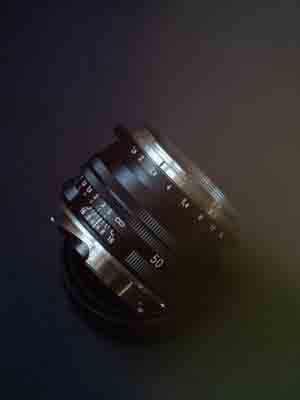
Here, most of the ergonomic features can be seen well. Also note the tiny mounting indicator on the mount.
Mounting dot
The mounting indicator dot on the Nokton is a small, red, indentation on the rear mount. Compared to the raised dot on the lens housing on most other contemporary lenses the marking on the Nokton is a lot more subtle.
It’s less easy to see from an angle and you can’t really make it out by touch.
I change lenses so rarely that I don’t find this much of an issue. But I could see this becoming annoying for someone switching more regularly, especially on the go or in lower light.
Accessories
Aside from front and rear caps there aren’t any added accessories here.
There’s a nicely made hood available. It’s pretty expensive though. I haven’t picked one up as the small size is such a big motivation for choosing this lens.
As for the caps they’re plastic, but nicely designed and made. They’re nothing special, but definitely functional. The front cap stays in place a lot more reliably than the ones for Zeiss ZM lenses for instance.
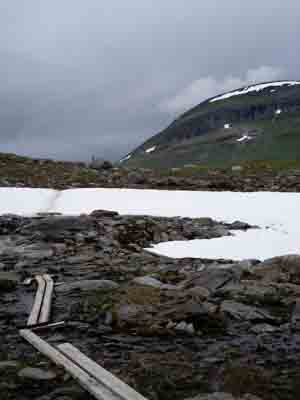
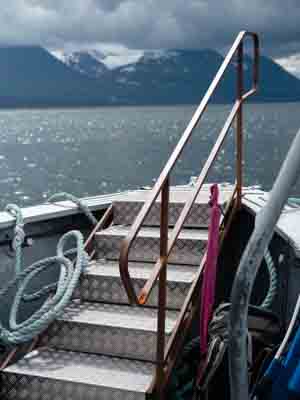
The last day of the hike ends up the most strenuous by far – with rough terrain, large elevation changes, and poor weather to boot. Exhausted, we set up camp on the shores of Akkajaure. By the time the boat picks us up in the morning, the weather has changed for the better.
Ergonomics
The Nokton 50/1.5 II handles very well, offering sensible ergonomic features.
While a few aspects aren’t fully aligned with my preferences, there isn’t a whole lot to complain about in objective terms.
Balance & viewfinder intrusion
A few major positives about the handling stems from the very compact size of the lens.
Fitted on to an M-mount camera the balance is nigh on perfect. It’s very comfortable to hold and use even over extended periods of time.
There also isn’t any viewfinder intrusion at farther focus distances. Closer to the minimum focus distance the lens blocks a tiny fraction of the 50mm framing area, but it’s definitely far from problematic. Very few fast lenses fare better in this regard.
Focusing
I have a definite preference for focus tabs in this focal length range. So already from the get go the 50/1.5 II already feels slightly compromised compared to the Voigtländer 50/2.5 or the 40/1.4 to me, though I’m aware that this is an area where personal preference plays a large part.
That said I can definitely get on just fine with a nice focus ring. And in this regard the Nokton is mostly great.
The finely ribbed focusing ring gives a solid, comfortable grip under pretty much any condition. I’ve never found myself struggling to find it, or grabbed something else on the lens instead.
The focus throw is 90° – fairly short considering the focal length and speed of the lens.
As mentioned earlier the focus feel is rather dampened – something that has both pros and cons.
On the positive side it’s easier to make smaller adjustments without overshooting. This means that the short focus throw doesn’t really end up problematic in practice in terms of focus accuracy.
In terms of negatives the dampening sometimes makes it more difficult to work quickly. It’s especially noticeable when moving focus from one extreme to the other, or when racking back and forth to follow moving subjects.
That said, I haven’t found it particularly problematic or distracting in use*.
* For instance, I’ve not found it’s been slowing me down as much as with the Zeiss ZM 35/1.4 for some reason. There might be a hair less stiction, but even trying them back to back I’ve got to say that they feel very similar. Perhaps I’ve simply adjusted to the more dampened travel.
Still, given a choice I do prefer a lighter focus feel with less resistance.
Setting the aperture
The aperture is selected with a “winged” ring – i.e. the aperture ring is smooth around a good chunk of the circumference, but there are two protruding, finely ribbed grips.
This is another design choice where there are both pros and cons.
Let’s get the detrimental aspects out of the way first.
Compared to a fully ribbed, traditional aperture ring, it’s slightly harder to immediately locate the protruding wings as their positions change depending on the aperture setting. You sort of need to feel around for them at times. In my experience this has been especially noticeable when holding the camera in portrait orientation.
On the flip side – as the positions of the wings depend on the setting, it’s also possible to set aperture by feel (and know what setting you’re at when grabbing the wings, based on their position). In some situations this makes the lens feel faster to work with.
Personally I find it a pretty nice arrangement, but not really something I feel is a major improvement over a more traditional aperture ring (nor a problematic one for that matter).
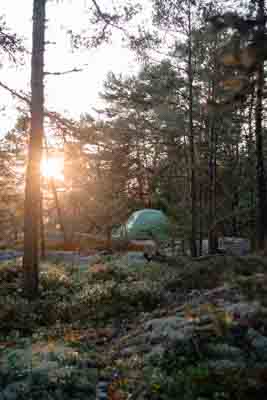
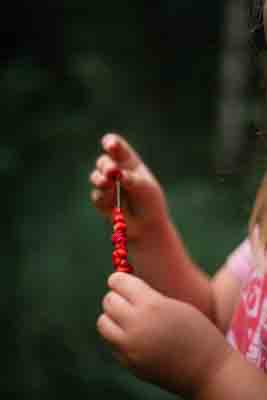
Trekking through the familiar forrest, we pick berries ahead of pitching our tent. I cook dinner on the storm stove while the kids play in the water. – Dinner’s ready, I call, as the sun slowly sets.
Image quality
The 50/1.5 II offers impressive performance. Images have a modern, high contrast look and the lens has a competent handle of most aberrations.
There are a few tradeoffs stemming from how small the lens is, but they’re less pronounced than expected for the most part. Under certain conditions these tradeoffs can add a slight bit of character to the images in ways that aren’t always expected out of a contemporary lens.
To clarify, let’s dissect the performance:
Contrast & resolution
The 50/1.5 II offers extremely impressive levels of definition most of the time.
Already wide open there’s solid resolution throughout most of the frame. The center of the frame is quite exceptional, even disregarding the specs of the lens. Contrast is very high across the frequency range. Excellent micro contrast gives a clear reproduction of fine detail. Both medium and low frequency contrast are at very high levels, with a punchy and vivid rendition of objects, even under flat light.
Performance seems optimized for mid distances. Definition is reduced slightly at far distances and a bit more noticeably at closer distances. Here spherical aberration reduces micro-contrast in particular by a slight amount. This isn’t too surprising behavior for a lens relying on unit-focusing*.
* Such an arrangement only allows for optimized performance at a single distance, generally infinity (compared to lenses with floating elements, which enables retained performance throughout the focus range).
While edges and corners hold up quite well, there’s a slight mid-field dip in definition. Here details aren’t as cleanly reproduced compared to the center or even edges of the frame. Put plainly – it lacks a tiny bit of bite. This is partly explained by a slightly wavy field curvature, leading to a hair of unpredictability in the results at times.
The position of this definition dip is slightly unfortunate, since your subject frequently ends up within this weaker zone if you frame by the rule of thirds for instance. Now, to contextualize this further – while performance isn’t quite perfect in this area under close scrutiny, the level of definition still remains high enough that it’s not generally visible.
Stopping down to f/2 increases definition across the board. It’s clearly improved near infinity and even more so at close range. Performance is quite impressive at this point but both f/2.8 and f/4 sees even further improvements in clarity, quickly becoming outstanding. Stopping down to f/5.6 and beyond gives more subtle improvements.
The midfield also picks up quickly stopping down, but it consistently lags the center of the frame slightly, even at f/8.
Overall though, the little Nokton performs very impressively!
As I tend to note – a few crops out of a few images aren’t necessarily all that informative in terms of fully assessing the performance of a lens. So see the following as illustrations rather than the basis for a comprehensive evaluation (the written summary offers that)

This wide open shot demonstrates the impressive performance out of the Nokton quite well. The features of both my kids are rendered clearly and in a true to life manner, even quite a ways away from the center of the frame. It’s worth noting that, with regards to definition, the Nokton does really well at these distances.
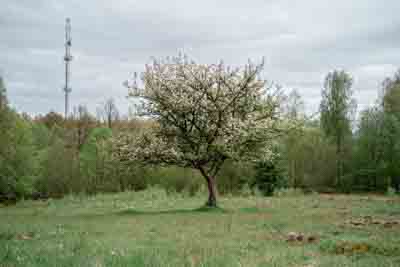
The Nokton is ever so slighly less sharp at closer and farther distances, when shot wide open. But, as demonstrated here, stopping down just a little (in this case to f/4) gives nigh on perfect performance. The mid-field crop is a hair less crisp than the center or edges, but generally you need to scrutinize the output closely to make out the difference. Overall, the performance is admirable here!
Color
The palette out of the Nokton is true to life and saturated. Subtle tones are reproduced in a believable and consistent manner.
It doesn’t feel quite as neutral as the Voigtländer 50/1.2, trending slightly warm (yellow/brown) with a faint hint of magenta color cast creeping into the shadows occasionally. These are subtle nuances though and not generally observable unless shot side by side with another lens. But I still found it curious to see a difference between these two lenses, despite both of them being recent releases from Voigtländer.
Bokeh & transitions
Being a fast 50, the Nokton offers the potential for a good amount of separation. Let’s take a look at how it does in a bit more detail.
Bokeh
In terms of bokeh the Nokton does very well for a fast normal lens, but with a few subtle, but somewhat unexpected characteristics.
At close distances the bokeh is generally exceptionally smooth. Out of focus highlights have fairly soft edges without pronounced outlining most of the time. Even busy backgrounds tend to look unobjectionable. Impressive!
Foreground bokeh is a bit less clean than the background bokeh, though it still holds up ok.
At mid to far distances things often look surprisingly smooth as well. However, depending on the conditions out of focus areas can sometimes take on a slightly messy look, especially towards the frame peripheries.
That it’s the peripheries that suffer most is due to one of the main trade offs with the Nokton’s optical design – a bit of optical vignetting.
Optical vignetting
Optical vignetting is far from an unusual trait with fast lenses – in fact most any option displays this to an extent. Still, it’s slightly more pronounced here than what’s common. This is likely one of the trade offs made to achieve the exceptionally small size of the lens.
In effective terms, optical vignetting means that the aperture size becomes smaller when looking through the lens at an angle (i.e. towards the edge of the frame), where the image circle becomes cut off due to the small dimensions of the lens.
So, one of the stronger telltale signs of optical vignetting is that out of focus highlights often take on a slight cats eye shape closer to the edges and corners of the frame. Something that’s certainly observable with the Nokton. A side-effect of this cats eye shaped bokeh is that under some conditions a bit of swirl can be present – an interesting and somewhat unusual trait in a contemporary lens.
The effectively smaller entrance pupil at the outer parts of the frame also means that depth of field is extended sligthly at the peripheries (the reduced entrance pupil size gives the same effect as if the lens would be stopped down a bit, but only towards the edges). The apparent separation is reduced somewhat as a result, making the Nokton feel like a slightly slower lens than it is in some instances
Overall, these behaviors all contribute to the aforementioned messiness towards the frame periphery.
To my eye these interconnected traits can end up looking slightly distracting at times. However this is subjective territory and many will perhaps find these characteristics desirable. They’re certainly ones that lends the lens a hair more character than most typical, contemporary options.
It’s also worth noting that even if I’m able to pick up on these characteristics when looking for them, I never find them problematic enough to take away from me liking an otherwise successful image.
Besides, having less smooth bokeh at farther distances compared to closer ones is a common trait in most lenses in this focal length range.
So overall I don’t feel this is much of an issue. And despite spending some time dissecting these behaviors (mostly out of an intellectual interest) I’d rate the Nokton as slightly above average among fast normals in terms of bokeh.
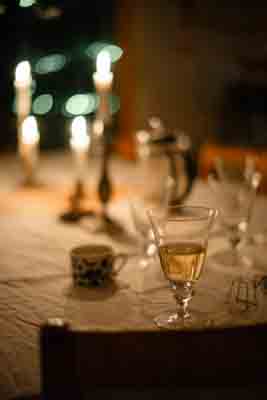

The Nokton displays a bit more optical vignetting than what’s commonplace. This can be seen quite clearly in the first example, with the cats eye shape of the out of focus highlights. In the second example, a slight bit of swirl can be seen – a somewhat unusual trait.
Transitions
Transitions are well defined and moderately quick, without being abrupt. There’s a nice sense of depth at wider aperture settings as different planes are separated cleanly.
The transition zone is a little bit nervous, particularly wide open. For instance, double edged bokeh can occasionally be observed. Stopping down slightly make the transitions smoother.
Bokeh texture
As the Nokton uses two aspherical surfaces in its design, it’s not surprising to see a bit of onion ring texturing in out of focus highlights. It’s usually not pronounced though and overall I’d rate it as well controlled in this regard.
Aberrations
The Nokton 50/1.5 II is a very well behaved lens overall, with few major issues to discuss up in the realm of aberrations.
Let’s start with a continuation on traits we covered in the bokeh section.
Vignetting
Unsurprisingly there’s pronounced darkening of the frame towards the edges at wider aperture settings, due in part to the optical vignetting mentioned earlier.
At over three stops of light loss wide open this lens is in fact among the worst offenders in this regard among lenses I’ve reviewed.
In my use this has caused me to correct for vignetting at a much more frequent basis than I otherwise do (which I usually do very rarely).
To keep things in perspective though, as it’s a trait that’s very easy to correct for I don’t view this as a major detriment. The vignetting is also reduced significantly when stopping down, quickly becoming a lot less pronounced.
Chromatic aberrations
Longitudinal chromatic aberrations can be observed in images out of the Nokton shot at wider aperture settings. Out of focus areas take on subtle green or magenta fringing behind and ahead of the focal plane respectively.
This isn’t really surprising considering the speed and spec of the lens. It’s also rarely pronounced enough to distract and if that’s the case, it’s an easy enough aberration to correct for.
Other than this the Nokton is well behaved with only very subtle amounts of lateral chromatic aberration and purple fringing around highlights. Certainly nothing that distracts or detracts from the overall impression in general use. Nice!
Coma
Coma isn’t perfectly corrected wide open, but improves quickly stopping down. It’s reduced significantly already by f/2 and practically gone by f/2.8. So while the Nokton might not be ideal for astro photography, it still does very well considering the size and speed of the lens.
Distortion
There’s a slight bit of pincushion distortion. It’s certainly not enough to end up distracting in general use, but might warrant correction when shooting images where straight lines play an important role.
Focus shift
Focus shift is quite well controlled. The focal point shifts slightly farther back as you stop down, but the initial focus point always remains within the limits of the depth of field.
The most unforgiving behavior can be seen between f/2.8 and f/4 where depth of field only just covers the intended focus point. The definition at the focus point is still improved at these settings, but focusing through live view can give another slight improvement.
So the Nokton is fairly well behaved overall in this regard.
Flare
The 50/1.5 II suppresses flare efficiently under most conditions, though I feel it’s not quite as outstanding in this regard as some of Voigtländer’s other lenses.
Under specific and challenging conditions you can see a loss of contrast across a large portion of the frame.
In high contrast scenes you can sometimes see a much more subtle reduction in contrast between highlights and deep shadows.
I’ve also observed a large, purple type of ghosting at times.
The Nokton also suffers a variation on the rainbow colored artifact that’s common in many Voigtländer and Zeiss ZM lenses. Not surprising as it’s induced by the chrome front ring. A hood or black rimmed filter reduces or even eliminates this issue.
Overall then the Nokton offers solid, though not quite outstanding, flare control.
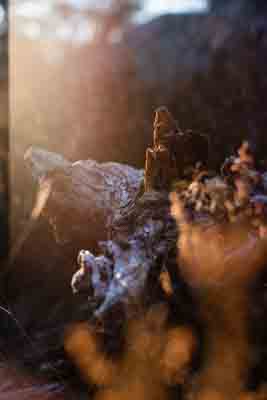
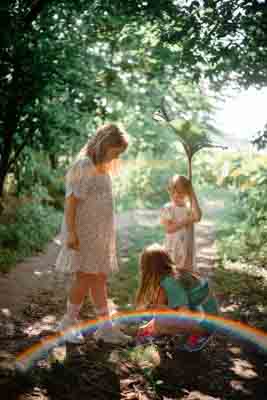
Flare is generally well controlled, but can pop up under specific conditions. Moslty in subtle ways, but sometimes more prominent artefacts can appear – like in the two examples above. These instances are reasonably rare though.
Sunstars
The Nokton’s 12-bladed diaphragm with mostly straight blades result in pronounced sunstars already from f/2.8. It’s a matter of preference how appealing or important trait that this is. Personally I can’t say that this is an area where I have a particularly strong opinion, though occasionally I think that defined sunstars can add something to the right image.
Differences between mediums
I’ve only shot the Nokton on digital so far, but if I were to make an educated guess I’d say that the Nokton would do great on film.
The crisp, high contrast output tends to translate very well to film (and in some ways I generally like this type of signature even more on film than on digital really).
In terms of black & white I also feel like it’s a good candidate with the clear tonal separation and overall clarity offered.
Overall rendering
The Nokton 50/1.5 II is certainly an impressive performer. It offers a sharp, crisp and modern rendering with smoother bokeh than expected most of the time. It also controls aberrations in a very competent way.
While there are a few caveats (chiefly the high optical vignetting, but also the slightly messy transition zone and mid-field dip) they are very minor in the grand scheme of things (depending on one’s tastes some of them can even be seen as beneficial). Taking into account the speed and size of the lens it’s hard not to come away impressed.
I do have to say that from I subjective standpoint I do feel that the rendering can come across as ever so slightly strained at times, occasionally feeling a little harsher than I’d prefer*.
* It doesn’t fully replicate the exceptionally beautiful and well balanced rendering out of the 50/1.2 for instance, even if the 50/1.5 II is actually slightly higher performing in some regards. I also feel like the Zeiss ZM 50/1.5 offers a more balanced output in a few ways, even though it’s far from as competent in absolute terms.
Aside from that though, I’d certainly rate it as a very nicely rendering lens. The general impression is one of competence and sophistication. There’s a bit of liveliness and character at wider apertures, that means images generally avoid feeling overly clinical. Stopped down slightly, there’s instead a strong sense of transparency to the output, resulting in a bit of flexibility in its signature.
As a bottom line, the 50/1.5 II is more than capable of both competent and beautiful results. I find it hard to ever ask for more than this.

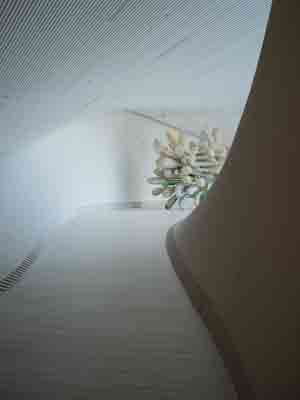
We drive out of Oslo in the morning and spend most of the day sightseeing. The sculpture park ends up a highlight. Despite spring having arrived, snow still lingers on the mountains and we wear snowshoes for our trek up to the hut we’ve rented for the night. We make it up there just in time to enjoy the sunset.
In use
The Nokton 50/1.5 II is swell in the field. The small size, low weight and well considered ergonomics makes it very transparent in use with pleasant handling and minimal issues with for instance viewfinder intrusion. That it’s both very capable and fast enough to allow shooting even in very low light definitely adds to the appeal.
I’ve had it for well over two years at this point and have been consistently impressed with it. On balance it compares favorably in most regards with every other 50 I’ve ever shot.
So overall it’s been swell and I’ve never been anything but satisfied with it in use.
In relation to other 50’s
There’s sort of a downside of having shot with so many lenses at this point – there’s always a lens or two that align particularly well to my preferences in one specific area. And whilst it’s not fair to expect any single lens to perfectly align with all of my wants and needs, this has been unusually noticeable during my time with the 50/1.5 II.
In terms of handling, it’s not quite as transparent in use as I find a slightly smaller lens, with a focus tab, like the Voigtländer 50/2.5.
With regards to rendering, there are qualities out of the Voigtländer 50/1.2 or Zeiss 50/1.5 that I prefer.
Initially I began feeling like the 50/1.5 II was sort of compromised. There wasn’t a single area where I felt like it truly excelled and surpassed other lenses I had shot with.
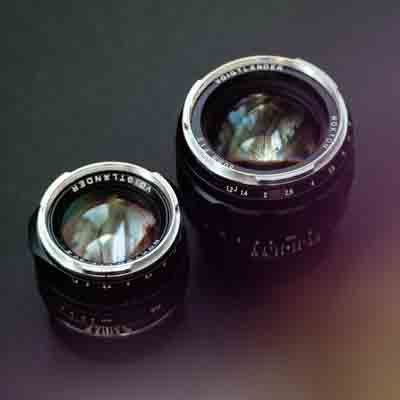
I’ve been thinking about how the 50/1.5 II and 50/1.2 compare. They have both similarities and differences, but they are both successful in meeting their design goals.

The Voigtländer 50/1.5 II and Zeiss ZM 50/1.5 are very similar in terms of size and handling, but have different goals, as well as strenghts and weaknesses.
Over time though, I started to realize that this was selling it short. I think the perspective to hold on to here is to circle back to the design goals of different lenses, and think about how well those are being met.
Looking to the 50/2.5 for instance, the design goal of that lens is obviously about a small size with excellent handling. So it’s not necessarily a surprise that it does better in these areas, compared to the 50/1.5 II. But that little lens carries significant compromises when it comes to performance and speed.
On the other end of the spectrum – the Nokton 50/1.2 is all about performance and rendering. So it’s once again no surprise that it does better than the 50/1.5 II in these regards. But that comes with size and weight compromises.
I think it’s quite clear that the main design goal of the 50/1.5 II is to be a practical and well rounded lens. And from this perspective it’s simply a huge success.
It’s bright enough for most use cases, is small and well handling enough to not encumber you, while also offering high performance with sensible tradeoffs to retain the small size of the lens.
So whilst the 50/1.5 II isn’t a master in one single area, it’s a true jack of all trades – well rounded enough to be a constant companion and to handle most everything you throw its way with ease.
As a consequence, it’s become a mainstay in my kit – a lens I’ve ended up using tons over the past few years*.
* I’ve mostly been rotating between this, the 50/1.2 (whenever I’ve not been fuzzed about the larger size and weight, or keen on its rendering), and the wonderful Voigtländer 75/1.5 that I’ve yet to review.
I think it makes for a just about ideal day to day lens. It’s also extremely compelling as a lens to travel with, where its practical traits really shine. Or as a lens to build a small kit around, where it offers a very solid foundation to go from.
The 50mm focal length
In the past few years the 50mm focal length has become my default. I’ve found it an excellent fit for the way I like to shoot and for the look I enjoy. So a lot of the time I’ve been sticking to a 50 exclusively.
However I do realize that many are keen to build out a set of lenses that complement each other and as the Nokton is so well rounded I think it’s an excellent choice to build a small kit around.
In this regard I think the 50mm focal length combines well with a 28 or perhaps a 90. The low-light usability of the Nokton also reduces the need to choose another fast lens. So something like the Voigtländer 28/3.5 (or the new 2.8 that looks wonderful) or the Leica 90/4 could be interesting choices to build out a small kit.
Some people think a 35 and 50 (or a 50 and 75) are a bit too close to complement each other, but these days I tend to see this as an advantage. A close pairing like this can offer a bit of flexibility while still ensuring a good deal of cohesiveness. I’ve spent a good amount of time pairing the 50/1.5 II with the Voigtländer 75/1.5 (review coming soon) and have really enjoyed that.
Use on different cameras
Leica M Typ 262
This is the camera I’ve used the Nokton on the most, by far. It’s an incredibly competent and enjoyable pairing in use. The combination balances and handles exceptionally well without any viewfinder blockage to speak of. The fast aperture on the lens, in combination with the very decent high ISO performance offered by the camera means it’s possible to shoot even in very subdued light. In terms of performance the pairing is also fantastic with beautiful, competent output. There isn’t any color shift or other issues specific to a digital camera pairing. Overall, with a setup like this it’d be hard to see why you’d ever need anything more really.
Leica M10
Also a great pairing! Like with the Typ 262, the balance and handling is fantastic. The improved high ISO performance of the M10 means it's even easier to keep shooting as light gets low.
Leica M3
I’ve not shot this setup properly yet. What I can say is that the combination balances and handles brilliantly. The M3 is just fantastic for shooting 50mm lenses. The fast speed offered by the Nokton certainly comes in handy when shooting film. The only thing to watch out for is that the Nokton is able to focus closer than the camera, so some care is required at close range.
Leica M4-P
Another setup that I’ve not had a chance to shoot properly yet, but that’s at least swell in terms of handling. The speed offered by the Nokton is definitely compelling for use on film and I’m definitely itching to have a go with this combination.
Sony A7
Despite a thicker filter stack on the Sony A7 the Nokton’s performance holds up reasonably well without excessive ray angle induced issues. Definition suffers a bit towards the edges, but stopping down a bit mostly remedies the issues. Most comparable native options offer better performance, but if you’re looking for a compact, fast lens, or in particular something to use on both an M-mount and a mirrorless camera the 50/1.5 II is a solid choice.
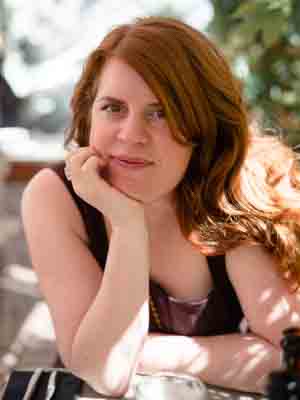
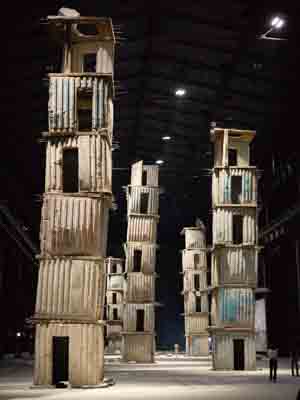
Milan ends up a well needed break. After a good few months of bleak winter weather, seeing the sun for a spell is such a treat. We meander around town in the heat. Pop in to a museum here, a coffee shop there. We rent bikes to make our way across town for dinner with friends.
Alternatives
The 50mm focal length is one of the most popular choices in M-mount and consequently there are tons of options out there. I won’t cover a massive number of alternatives, instead highlighting a few of the most relevant ones.
Leica Summicron 50/2 V
For a bit more than the price of a new Nokton you can pick up a used copy of this absolute classic. Despite being slower it’s a bit larger and heavier than the Nokton.
The Summicron is a 40 year old design at this point, but still offers excellent performance. Contrast is a little lower than with the Nokton, but definition is just about as high and the rendering is a touch more even across the frame. I do slightly prefer how the Summicron renders detail, but there are a few aspects where I prefer the rendering out of the Nokton. The bokeh in particular is regularly quite a bit more smooth with the Nokton, even at shared aperture settings.
In terms of handling I feel that things are a wash – both lenses offer solid handling but with a few minor niggles. The Summicron has an advantage in offering an elegantly integrated hood.
Overall I feel like the Nokton is a far easier recommendation though. The added speed, reduction in size and much lower price are all points hard to argue against individually, let alone taken together.
Read my review of the Leica Summicron 50 V
Leica Summilux 50/1.4 ASPH
In terms of spec this is the closest option coming from Leica. I’ve not had a chance to shoot it myself, but I’ve certainly been curious about it and have looked into its traits quite a bit.
The Summilux ASPH was an incredibly ambitious design when it launched in 2004, including both an aspherical surface and floating elements. It’s been a benchmark performer ever since.
Still, based on a few comparisons I’ve seen, the Nokton seems to perform just about on par with the Summilux in most regards, despite being smaller, lighter and far more reasonably priced.
The advantages of the Summilux mostly boil down to higher performance at close range (thanks to the floating elements) and more even bokeh towards the periphery (due to a lower level of optical vignetting).
Ergonomically I prefer a tab like on the Summilux and the aperture dial seems a bit more well considered. Many copies of the Summilux seem to suffer from inconsistent focus feel though, as well as focus ring stiction (again, due to the floating elements) – a bit unfortunate and likely something I’d personally find distracting.
As the Nokton is so much smaller and lighter I’d say that it still wins out overall with regards to handling. Taking the price difference into account as well, it’s the far easier lens to recommend.
TTArtisans 50/1.4
There are more and more interesting M-mount lenses coming out of China lately. This one looks particularly compelling.
I’ve not used it, but it seems to offer a very pleasant, smooth rendering and solid performance overall (with propensity to flare as one of the clearer shortcomings). It seems well built and is extremely reasonably priced too.
In terms of ergonomics it’s equipped with a focus tab which is a big plus in my book. It’s a pretty big and heavy lens though – certainly significantly larger than the Nokton and more comparable to the Voigtländer 50/1.2.
Overall the TTArtisans lens seem a better choice on a constrained budget or if you prefer a smoother rendering.
The Nokton on the other hand, performs better in most regards. So it’s the better choice if you’re looking for pure performance or if you value a smaller size.
Voigtländer 50/1.5
As mentioned previously there are also two earlier 50/1.5 iterations from Voigtländer. Both seem like excellent lenses, though with some trade offs compared to the most recent version.
The first iteration, for Leica Thread Mount, offers solid performance but doesn’t focus closer than 0.9m.
The second iteration, for M-mount, offers the standard 0.7m close focus distance, but comes with a somewhat frivolous industrial design that seems to impact ergonomics negatively.
While I could likely live with either lens quite happily, given the choice I think the latest iteration is the one to go for (though the earlier versions can sometimes be had at a comparable steal, at which point it’s hard to argue against picking one up).
Voigtländer Nokton 50/1.2
As noted at a number of spots throughout this review, the 50/1.2 has become one of my all time favorite lenses. I’ve already touched on many of the differences between it and the 50/1.5 II elsewhere, but for the sake of cohesion let’s sum up.
The 50/1.2 offers extreme speed, excellent performance and a beautifully balanced rendering in a surprisingly compact form factor considering the specs.
Peak performance out of the 50/1.5 II is a little higher, but the 50/1.2 is more even across the frame without an as visible midfield dip in definition. The bokeh is also nicer on the 50/1.2, once again with a more even impression across the frame due to lower levels of optical vignetting. In terms of overall rendering the 50/1.2 is smoother and more flexible, offering a somewhat classical look at wider apertures and exceptional performance stopped down.
In comparison the output from the 50/1.5 II is crisper and punchier, something many people might like. To my eye the output from the 50/1.5 II can sometimes come across as a little harsher and more nervous than what I prefer, as well as what I tend to see out of the 50/1.2. Most of the time the difference isn’t massive though.
In terms of ergonomics the 50/1.2 mostly wins out in terms of control points. However the small size of the 50/1.5 II is a massive boon and an extremely compelling trait in day to day use.
Price wise the 50/1.2 is a bit more expensive, but both are reasonably priced.
Overall then it’s a tough choice between two fantastic lenses with compelling traits from each.
If I were to sum it up as succinctly as possible I’d say that the 50/1.5 II wins out in terms of practicality, while the 50/1.2 feels like something truly special, particularly with regards to rendering.
Read my review of the Voigtländer 50/1.2
Voigtländer Color Skopar 50/2.5
This is an interesting comparison, or more of an illustration perhaps on Voigtländer’s increasing optical design prowess. Launched in 2002 with a clear goal of achieving a small size the Skopar is certainly exceptionally compact. It also offers just about perfect ergonomics and handling to my tastes. It’s a very fun and pleasant lens in use with an appealing, if not quite impressive, output.
The Nokton on the other hand really demonstrates how skilled the engineers and designers at Voigtländer have become. Despite being just slightly larger than the Skopar, the Nokton is close to two full stops faster (one and two thirds to be more exact). It completely smokes the Skopar in terms of performance with much higher definition across the frame, higher contrast and smoother bokeh. The aluminium version of the Nokton is even a hair lighter than the brass bodied Skopar. It’s also a lot easier to come by as the Skopar is long since out of production.
In terms of recommendations then, the Nokton is definitely the objectively better lens. Still, I hold a great deal of affinity towards the Skopar. It’s just such a nice little lens, that’s so fun to use. I feel it handles slightly better than the Nokton, as mentioned. At times I also prefer the less high strung signature it offers, even if its performance is visibly lower. One last benefit of the Skopar is that it uses the Leica Thread Mount and can be used on more cameras as a result.
Read my review of the Voigtländer 50/2.5
Voigtländer Color Skopar 50/2.2
I’ve not had a chance to handle this new release from Voigtländer. It looks wonderful. Compact and high performing, with ergonomics that look just about perfect. From what I’ve seen, the rendering out of the Nokton is a little nicer though. The biggest difference however, is likely speed – you get a lot more versatility out of the Nokton, in a package that’s still exceptionally compact.
Voigtländer Nokton 40/1.4
As a day to day choice, this earlier lens from Voigtländer shouldn’t be overlooked.
It’s exceptionally small (smaller than the 50/1.5 II even), very fast and offers just about perfect ergonomics to my tastes. It’s also priced very affordably.
It does feel a little overstretched in terms of performance at f/1.4 compared to what the 50/1.5 II delivers. Once stopped down slightly it’s really quite well behaved though, with a pleasant rendering overall.
Most M-mount cameras lack corresponding frame lines, but in practice this isn’t a huge issue.
Still, the 50/1.5 II certainly isn’t without benefits. As mentioned, the performance is higher and more even across the frame, especially at wider f-stops. I also feel that the rendering is nicer, mostly due to bokeh often being smoother. That most M-mount cameras have correct frame lines is also beneficial.
So no clear winner in this regard, it’s more down to what traits someone finds preferable.
Read my review of the Voigtländer 40/1.4
Zeiss ZM 50/2 Planar
Since its release, the Planar has been one of the easiest recommendations among M-mount lenses. It’s reasonably priced, handles very well and offers excellent performance.
There aren’t really any major caveats aside from perhaps an over efficient signature at times. For day to day use it’s also nice with a bit more speed than f/2.
The Nokton makes swift work of both these issues. The f/1.5 aperture means the Voigtländer is a bit easier to use in low light. There’s also a bit more character wide open compared to the Zeiss at f/2. In terms of performance the Nokton is generally on par or ahead of the Planar at shared f-stops with a broadly similar rendering (though it’s sometimes a little less even across the frame). Impressive considering that the Nokton is both smaller and lighter!
Ergonomically they’re quite comparable with solid handling but a few minor niggles on each (the third stop aperture settings on the Planar, the dampened focus ring travel on the Nokton). Still, both have swell handling in use.
Overall then, while both are great lenses, I feel that the Nokton usurps the Planar as the easiest recommendation among M-mount lenses.
Read my review of the Zeiss ZM 50/2
Zeiss ZM 50/1.5 Sonnar
This is an interesting comparison. Physically the Sonnar and Nokton are almost indistinguishable, while also offering very similar specifications.
In terms of optical designs they’re extremely different however.
The basic Sonnar design that this Zeiss is based on has a number of inherent drawbacks that means it won’t offer the highest absolute performance. It also suffers from rather pronounced focus shift. On the positive side the Sonnar design is renowned for the particularly pleasant signature often offered out of lenses based on this formula. In this regard the Zeiss certainly delivers with unusually appealing looking output.
The Nokton on the other hand focuses on achieving maximum performance in a very compact design, relying on modern techniques such as aspherical surfaces to increase image quality. In objective terms it absolutely smokes the Zeiss with noticeably higher definition under most circumstances.
Subjectively though, they aren’t as far apart as some reports might lead you to expect. The Sonnar holds up very well at lower magnifications with a slightly rounder, more relaxed impression than the generally punchy output coming from the Nokton. For printing large or under exacting circumstances the Nokton has a clear edge though.
Ergonomically things are mostly a wash. I prefer the lighter focus feel on the Sonnar, but the half stop aperture scale on the Nokton.
There is one additional aspect that benefits the Nokton though, the 0.7m minimum focus distance. The ZM Sonnar only focuses down to 0.9m – one of my main reservations with it.
Once again, there’s no choice that’s indisputably better than the other, it’s more about priorities and preferences.
Read my review of the Zeiss ZM 50/1.5

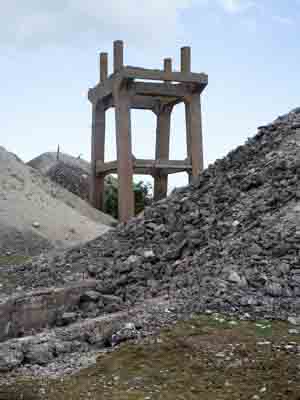
I’ve been itching to explore this unusual little peninsula for years, but as it’s off the beaten path, chances to head here have been few. Finally wandering around the old lime quarry grounds, it’s certainly a striking place, worth the wait.
Conclusion
Pros
- The Nokton is exceptionally small and light considering its specifications.
- Excellent performance in most regards and under most circumstances.
- Excellent build quality and solid ergonomics.
- Several finishes and coating options available.
- Relatively reasonably priced.
Cons
- Some minor caveats and shortcomings in terms of performance: e.g. some optical vignetting and a slight mid-field definition dip.
- A few minor ergonomic niggles means handling is just slightly short of being as transparent as it could be.
The Nokton 50/1.5 II has grown on me over the last few years. Initially I was a bit distracted by the fact that it doesn’t quite excel in any one single area – my mind was often drifting towards other options, offering specific traits I liked.
Over time though, I’ve come to really value and enjoy how incredibly well rounded the Nokton is. Realizing that, whilst not necessarily absolutely outstanding in any single area, there’s also very few ways it falls short. I’ve ended up leaning on it a lot – documenting day to day life, having it tag along traveling, lugging it on multi-day hikes – and rarely, if ever, coming away disappointed in it.
The compact size, solid handling, high speed, excellent performance and the well rounded rendering all contribute to something that ends up more than the sum of its parts.

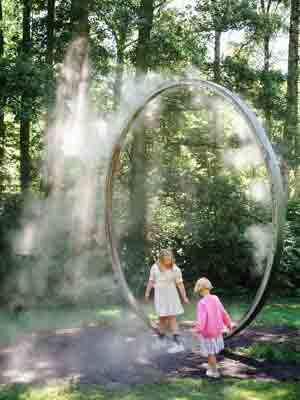
It’s striking to me, how much the kids have been growing during my time with this lens. Clearly I’ve leaned on it a lot in these past few years, and many dear moments have been captured using it – as good of an indication as any of a great piece of gear.
Consequently I can’t rate it as anything else than one of my favorite lenses at this point. At any given day these days, there’s a high chance that you’ll find it mounted on my camera.
To wrap up – it’s an impressive achievement on Voigtländer’s part and now one of the easiest recommendations amongst M-mount lenses.
Return Home
Photos in this review were taken using the Leica M Typ 262 or Leica M10. Photos of the lens were made using the Sony A7 or A7C. Exif-data is intact. Open any image in a new window for a closer look.




























